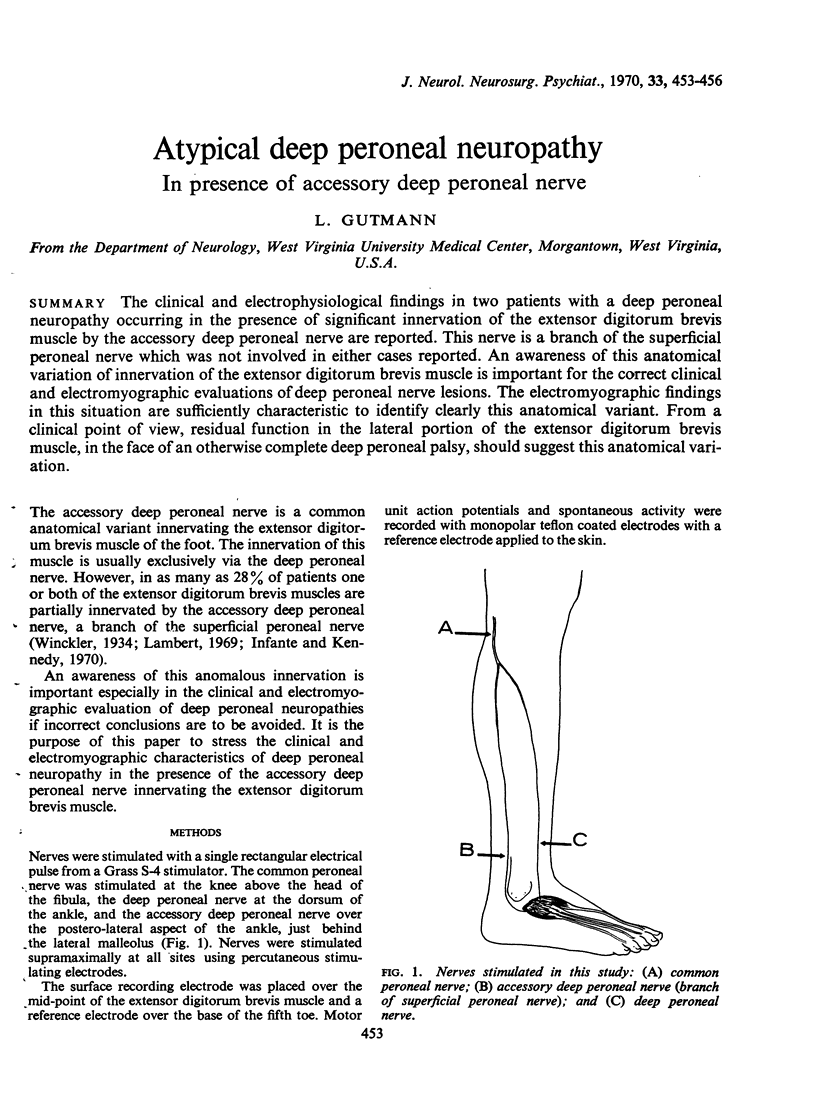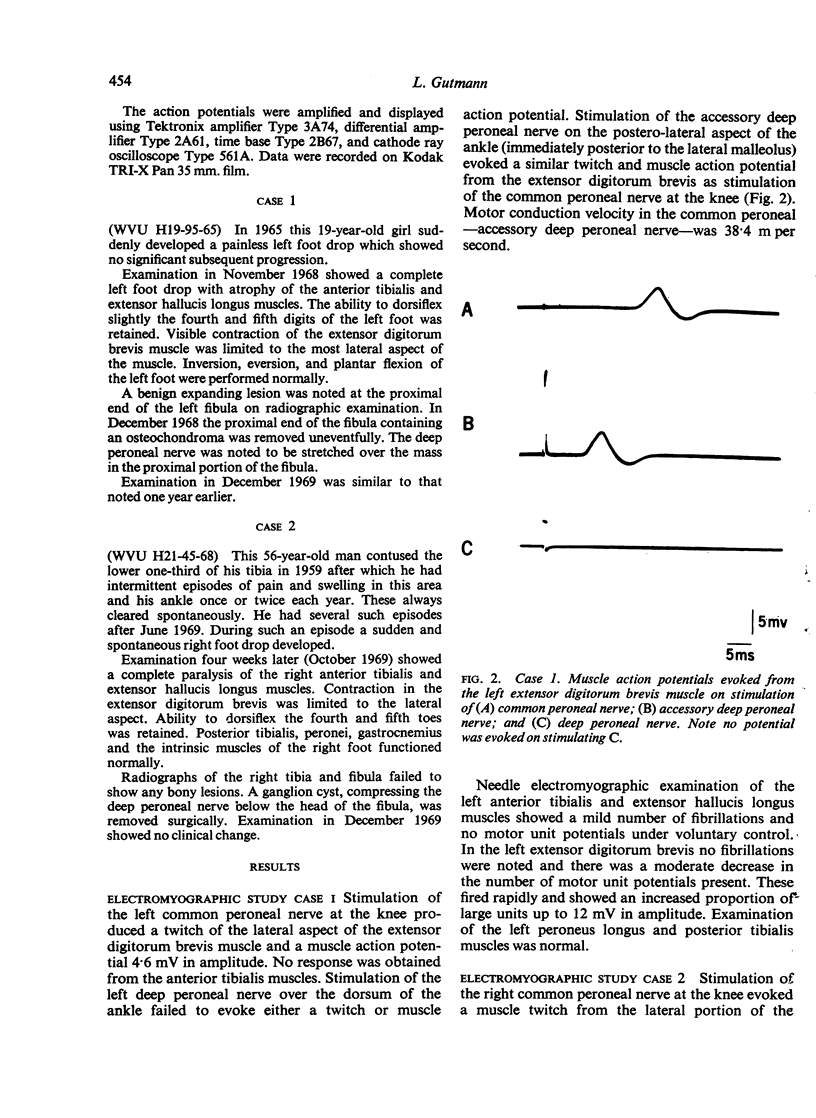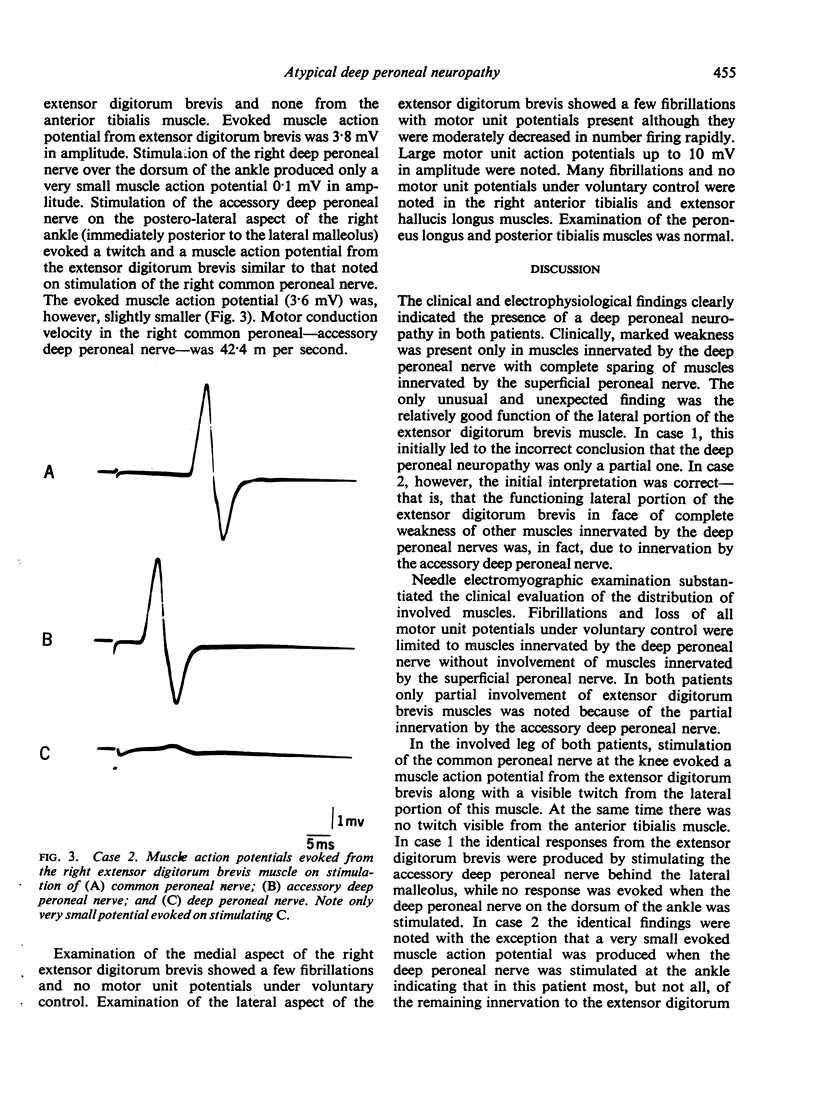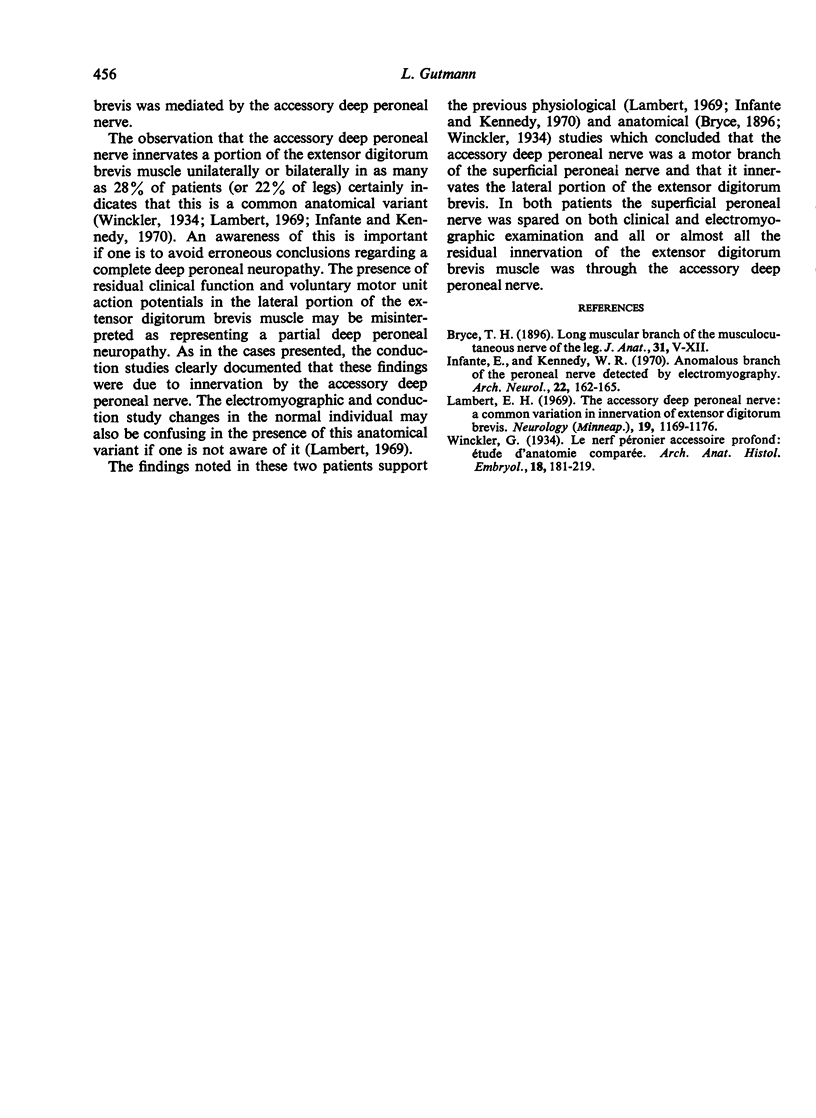Abstract
The clinical and electrophysiological findings in two patients with a deep peroneal neuropathy occurring in the presence of significant innervation of the extensor digitorum brevis muscle by the accessory deep peroneal nerve are reported. This nerve is a branch of the superficial peroneal nerve which was not involved in either cases reported. An awareness of this anatomical variation of innervation of the extensor digitorum brevis muscle is important for the correct clinical and electromyographic evaluations of deep peroneal nerve lesions. The electromyographic findings in this situation are sufficiently characteristic to identify clearly this anatomical variant. From a clinical point of view, residual function in the lateral portion of the extensor digitorum brevis muscle, in the face of an otherwise complete deep peroneal palsy, should suggest this anatomical variation.
Full text
PDF



Selected References
These references are in PubMed. This may not be the complete list of references from this article.
- Infante E., Kennedy W. R. Anomalous branch of the peroneal nerve detected by electromyography. Arch Neurol. 1970 Feb;22(2):162–165. doi: 10.1001/archneur.1970.00480200068007. [DOI] [PubMed] [Google Scholar]
- Lambert E. H. The accessory deep peroneal nerve. A common variation in innervation of extensor digitorum brevis. Neurology. 1969 Dec;19(12):1169–1176. doi: 10.1212/wnl.19.12.1169. [DOI] [PubMed] [Google Scholar]


